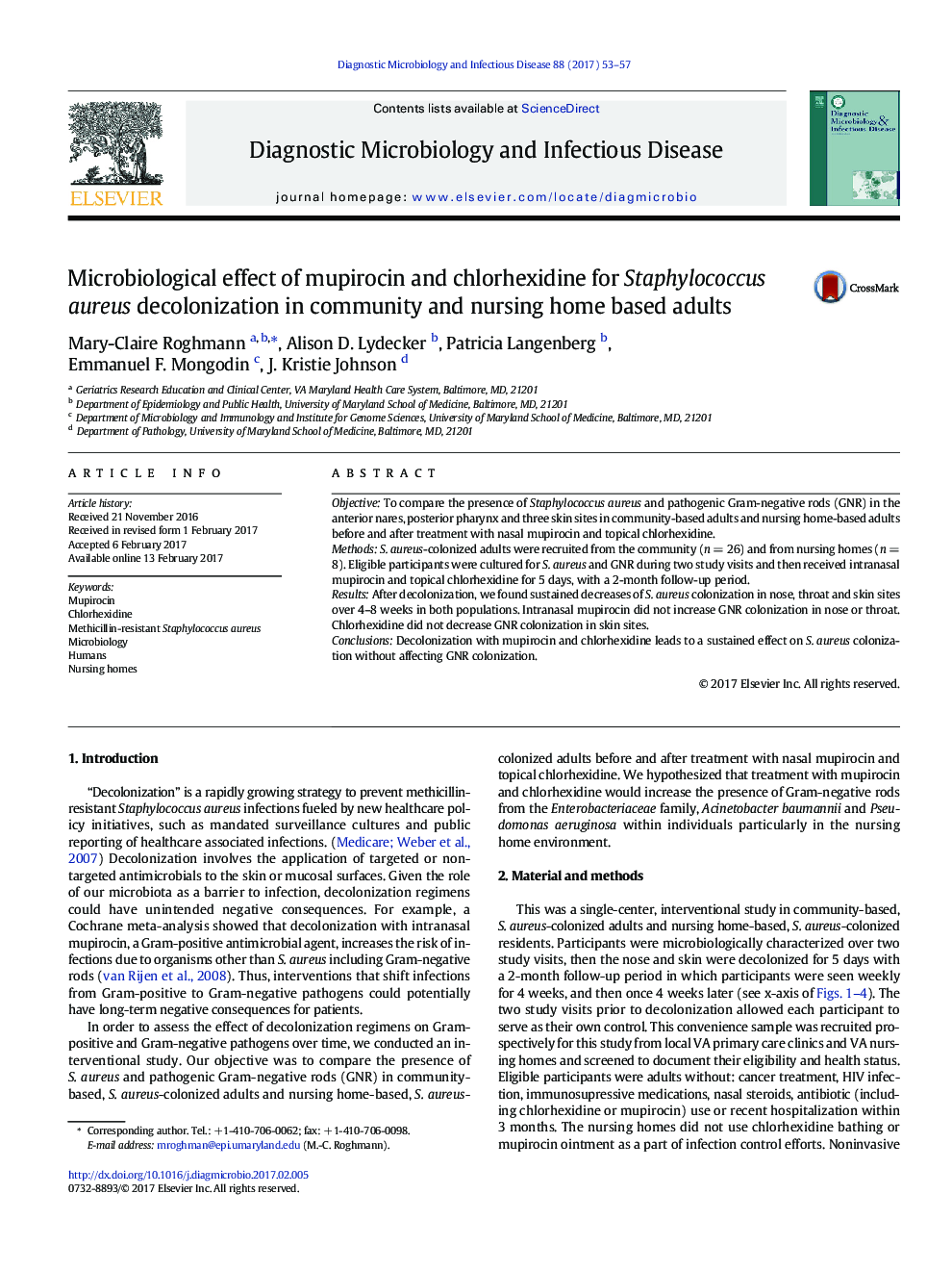| Article ID | Journal | Published Year | Pages | File Type |
|---|---|---|---|---|
| 5665937 | Diagnostic Microbiology and Infectious Disease | 2017 | 5 Pages |
â¢Adults with S. aureus were compared by residence before and after decolonization.â¢Decolonization decreased S. aureus colonization in both populations for 4-8 weeks.â¢Decolonization did not increase Gram-negative rod colonization in either population.
ObjectiveTo compare the presence of Staphylococcus aureus and pathogenic Gram-negative rods (GNR) in the anterior nares, posterior pharynx and three skin sites in community-based adults and nursing home-based adults before and after treatment with nasal mupirocin and topical chlorhexidine.MethodsS. aureus-colonized adults were recruited from the community (n = 26) and from nursing homes (n = 8). Eligible participants were cultured for S. aureus and GNR during two study visits and then received intranasal mupirocin and topical chlorhexidine for 5 days, with a 2-month follow-up period.ResultsAfter decolonization, we found sustained decreases of S. aureus colonization in nose, throat and skin sites over 4-8 weeks in both populations. Intranasal mupirocin did not increase GNR colonization in nose or throat. Chlorhexidine did not decrease GNR colonization in skin sites.ConclusionsDecolonization with mupirocin and chlorhexidine leads to a sustained effect on S. aureus colonization without affecting GNR colonization.
